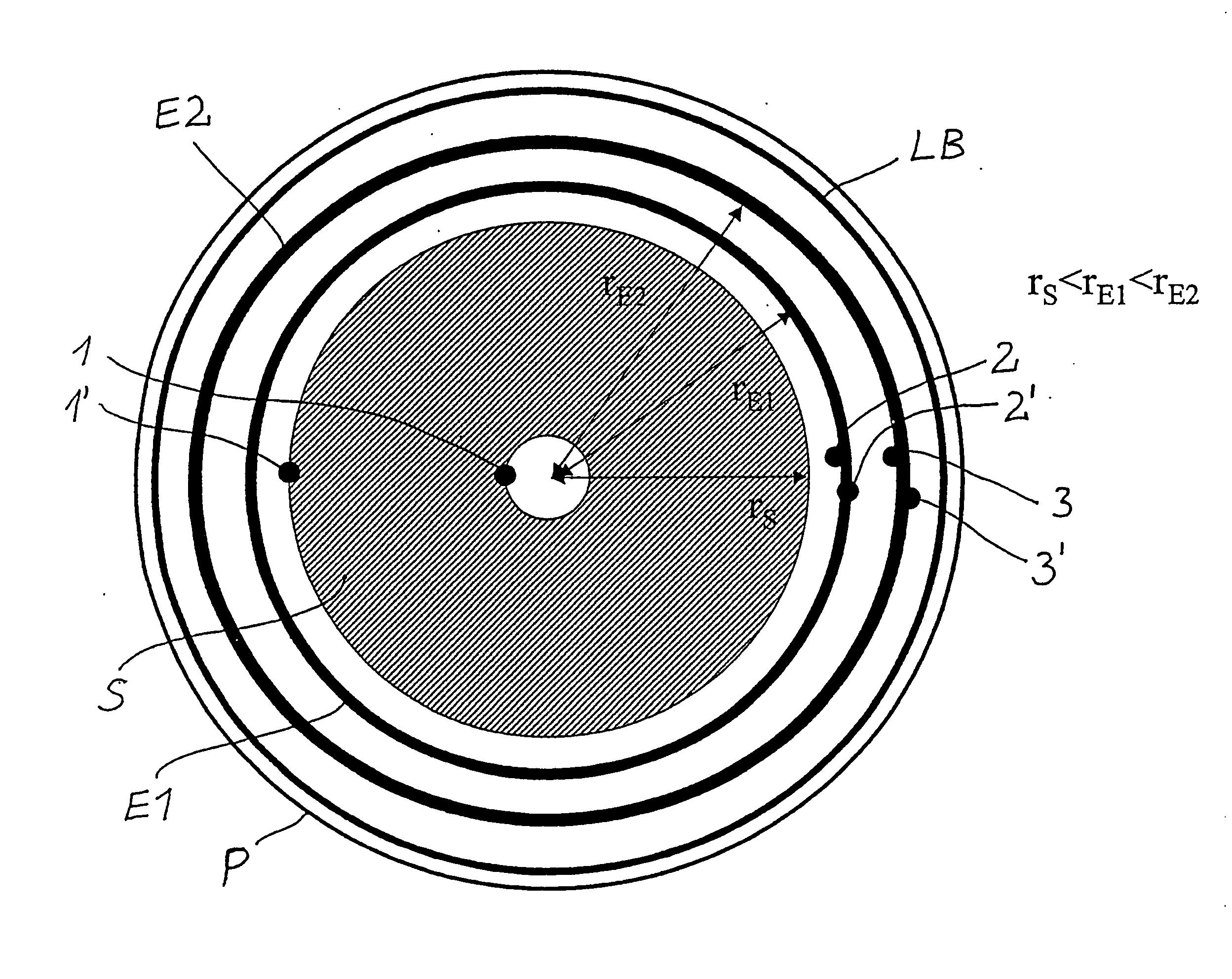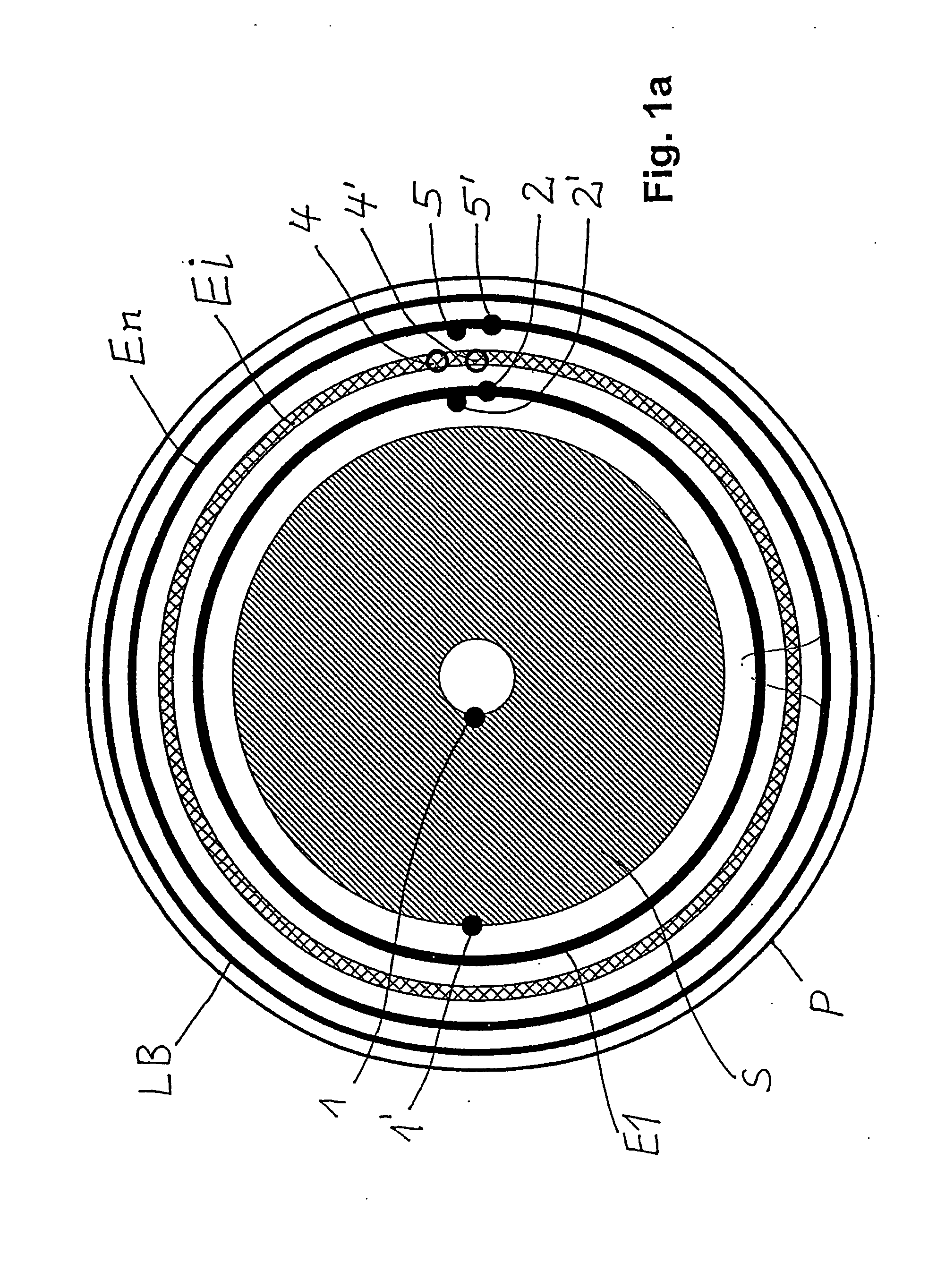Inductive Proximity Switch Based on a Transformer Coupling Factor Principle
a technology of coupling factor and proximity switch, which is applied in the direction of coils, magnetic measurements, stray field compensation, etc., can solve the problems of amplitude change, dampening of oscillation circuit, and complex construction, and achieves the effect of reducing the influence of installation damping of proximity switch according to the invention and high weld strength
- Summary
- Abstract
- Description
- Claims
- Application Information
AI Technical Summary
Benefits of technology
Problems solved by technology
Method used
Image
Examples
Embodiment Construction
[0039]FIGS. 1 and 1a show the fundamental structure of an arrangement according to the invention of a transmitting coil S and of a plurality of receiving coils E1 and E2 on a circular printed circuit board P. The transmitting coil S is preferably a flat coil having a radius rS and a circular coil surface area FS and having windings that are wound essentially spirally (not shown here) and also having the coil ends 1, 1′. The annular receiving coil E1 has windings that are wound essentially spirally or circularly, preferably in the form of a printed flat coil having the coil ends 2, 2′; likewise, the annular receiving coil E2 has windings that are wound essentially spirally to circularly, preferably in the form of a printed flat coil having the coil ends 3, 3′. In the example shown, the receiving coils E1 and E2 are arranged in a plane approximately concentrically around the transmitting coil S. The radius rE1 of the receiving coil E1 is greater than the maximum radius rS of the trans...
PUM
 Login to View More
Login to View More Abstract
Description
Claims
Application Information
 Login to View More
Login to View More - R&D
- Intellectual Property
- Life Sciences
- Materials
- Tech Scout
- Unparalleled Data Quality
- Higher Quality Content
- 60% Fewer Hallucinations
Browse by: Latest US Patents, China's latest patents, Technical Efficacy Thesaurus, Application Domain, Technology Topic, Popular Technical Reports.
© 2025 PatSnap. All rights reserved.Legal|Privacy policy|Modern Slavery Act Transparency Statement|Sitemap|About US| Contact US: help@patsnap.com



